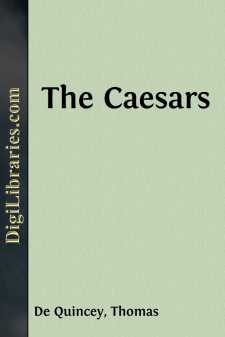History
- Africa 30
- Americas (North Central South West Indies) 50
- Ancient 68
- Asia 58
- Australia & New Zealand 8
- Canada 41
- Caribbean & West Indies 1
- Civilization 20
- Eastern Europe 12
- Europe 310
- Expeditions & Discoveries 60
- General 77
- Historical Geography 1
- Jewish 9
- Latin America 3
- Medieval 8
- Middle East 13
- Military 248
- Revolutionary 8
- Study & Teaching 5
- United States 353
- Western Europe 56
- World 13
History Books
Sort by:
by:
Edward Duffy
During the latter part of October, 1862, negotiations were made by which the 167th Regiment, Colonel Homer A. Nelson, in Camp at Hudson, was consolidated with the 159th Regiment, Lieutenant-Colonel Edward L. Molineux, in camp at Brooklyn. The consolidated Regiment was designated the 159th, Colonel Nelson retaining command. The Regiment left "Camp-Kelly," Hudson, on the 30th day of October,...
more...
by:
Lewis Goldsmith
PARIS, November 10th, 1805. MY LORD,—The Letters I have written to you were intended for the private entertainment of a liberal friend, and not for the general perusal of a severe public. Had I imagined that their contents would have penetrated beyond your closet or the circle of your intimate acquaintance, several of the narratives would have been extended, while others would have been compressed;...
more...
The publication at this time of a speech of the Presidential Canvass of 1860, may seem uncalled for, and be imputed to other than the motives that influence me. I nevertheless submit it to the candid consideration of the public, and especially of such as having heretofore entertained wrong views on the chief question involved in the canvass of 1860 and the position of the lamented Douglas, may desire...
more...
THE CÆSARS. The condition of the Roman Emperors has never yet been fully appreciated; nor has it been sufficiently perceived in what respects it was absolutely unique. There was but one Rome: no other city, as we are satisfied by the collation of many facts, either of ancient or modern times, has ever rivalled this astonishing metropolis in the grandeur of magnitude; and not many—if we except the...
more...
CHAPTER I. Carson's Birthplace—His Emigration to Missouri—Early Prospects—Is an Apprentice—Stories of the Rocky Mountains—He Enlists to go there—Adventures on the Prairies—Broaders is Wounded—Carson's Nerve put to the Test—Rude Amputation—Safe Arrival at Santa Fé—Goes to Taos and learns the Spanish Language—Early Vicissitudes—Disappointment and Attempt to return to...
more...
THE FIRST CHAPTER. What manner of people did first inhabite this our country, which hath most generallie and of longest continuance béene knowne among all nations by the name of Britaine as yet is not certeinly knowne; neither can it be decided frÐâ¦ÐÐ whence the first inhabitants there of came, by reason of such diuersitie in iudgements as haue risen amongst the learned in this The...
more...
A NARRATIVE &c. &c. &c. I arrived at the camp at Wady Haifa on the Second Cataract, on the 16th of the moon Zilhadge, in the year of the Hegira 3255, where I found about four thousand troops, consisting of Turkish cavalry, infantry and artillery, and a considerable proportion of Bedouin cavalry and Mogrebin foot soldiers, besides about one hundred and twenty large boats loaded with...
more...
My parents, John and Mary Sheridan, came to America in 1830, having been induced by the representations of my father's uncle, Thomas Gainor, then living in Albany, N. Y., to try their fortunes in the New World: They were born and reared in the County Cavan, Ireland, where from early manhood my father had tilled a leasehold on the estate of Cherrymoult; and the sale of this leasehold provided him...
more...
Preface For some reason the people of today are not nearly as familiar with the achievements of the last fifty years as they are with those of earlier days. The school boy can glibly recount the story of Columbus, William Penn, or Washington, but asked about the events leading up to the settlement of the West will know nothing of them and will probably reply "they don't teach us that in our...
more...
Life of Rear Admiral John Randolph Tucker A SKETCH OF THE AUTHOR. JAMES HENRY ROCHELLE, the author of the following pages, and the subject of this sketch, was of French-English and Celtic, or Scotch-Irish, extraction—English through his paternal great-grandmother, who was the daughter of Hinchia Gilliam, and his wife (née) Harrison; Scotch-Irish through his maternal ancestry. The name itself...
more...











